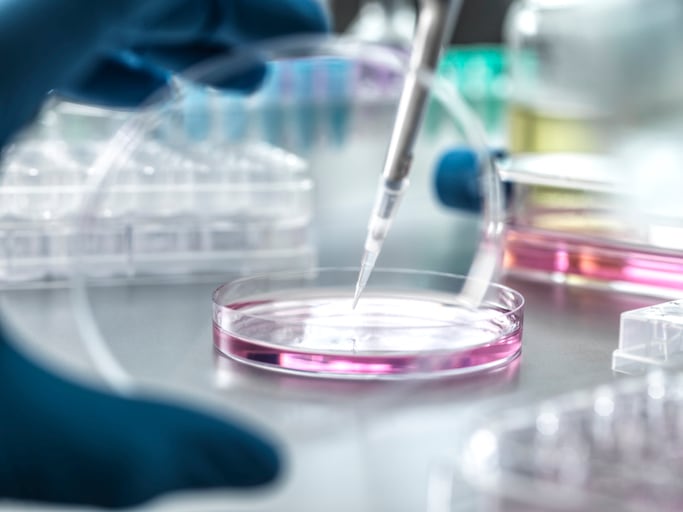Known as G-NiiB Liver Goal Pro SLD07, the synbiotic consists the probiotics strains Bifidobacterium adolescentis, two Bifidobacteria, Lactobacillus gasseri, Lactobacillus rhamnosus, and a prebiotic blend of galactooligosaccharides (GOS), fructooligosaccharides (FOS), xylooligosaccharides (XOS), and corn fiber.
Vitamin E is also present in the formulation.
It is sold in G-NiiB’s domestic market in Hong Kong via pharmacy chains Mannings and healthcare professionals since last month, with plans to launch in Mainland China, Singapore and Malaysia next.
This is also the brand’s first product designed for liver health and has been clinically studied in 27 patients suffering from MAFLD (Metabolic Dysfunction-associated Fatty Liver Disease) in a three-month study.
Some of the benefits that the synbiotic product claims on its packaging include 1) significantly repair liver scars, 2) enhances anti-inflammatory factors, 3) improves liver detoxification, 4) improves fat metabolism, and 5) antioxidant protection.
This is based on the understanding that a dysregulated gut-liver axis and microbial dysbiosis promotes MAFLD progression, which could lead to increased liver fat and metabolic dysfunction.
A breakout brand that emerged during COVID-19, G-NiiB’s first set of products were G-NiiB Immunity Pro and G-NiiB Immunity Plus clinically shown to have reduced plasma pro-inflammatory markers and restored depleted beneficial bacteria in COVID-19 patients.
Five years on, the brand has expanded its microbiome supplements to alleviating eczema in adults and kids, as well as relieving gastrointestinal discomfort. Earlier in March this year, it also launched a synbiotic for promoting healthy mood, relaxation, and gut health among kids.
G-NiiB is a brand by GenieBiome Limited - a spin-off from the Center of Gut Microbiota Research under The Chinese University of Hong Kong (CUHK) Faculty of Medicine.
Speaking to NutraIngredients, Tim Chan, corporate PR and marketing lead, said that the latest product was developed in response to growing prevalence of MAFLD across several Asian populations.
“We understand that liver disease, particularly MAFLD, is a growing global health crisis. Over 423 million people worldwide are suffering from MAFLD,” said Chan.
Also known as metabolic dysfunction-associated fatty liver disease, the term MAFLD was suggested in 2020 to refer to fatty liver disease related to systemic metabolic dysregulation.
This is also a name change for non - alcoholic fatty liver disease (NAFLD) to MAFLD - as the former is said to come with a set of criteria to enable easy diagnosis at the bedside for the general medical community.
“We understand that the prevalence of MAFLD is raising sharply in Asia. In Hong Kong, more than 40% of adults are affected, according to the latest research from Hong Kong University.
“We also see similar high rate of prevalence with close to 30% to 40% in Singapore, Malaysia, Indonesia, and mainland China. Therefore, it is an urgent need for us to address liver health issue, particularly in Asia.
“Most important, MAFLD is a silent disease - with few or no symptoms, but it can be progressive, leading to cirrhosis, liver cancer and in severe cases, it may be even lead to the need for liver transplantation or resulting in death.
“And previously, there was no medication for fatty liver disease, until 2024, when there was a new drug which the FDA has approved for advanced fibrosis,” he said. Fibrosis refers to liver scarring.
The medication he was referring to is Rezdiffra (resmetirom) - which was approved on March 14 last year by the US FDA for the treatment of adults with noncirrhotic non-alcoholic steatohepatitis (NASH) with moderate to advanced liver scarring (fibrosis), and is for use alongside diet and exercise.
“Even so, we see that there are urgent needs for safe, accessible, and preventive solution for both the broader population, especially those in early stage of liver fat accumulation or with metabolic risk factors,” he said.
Other reasons for launching the product include the belief and understanding that metabolic health could be support by gut microbiome modulation.
“From a corporate perspective, G-NiiB GenieBiome has a very strong mission to use novel microbiome solutions to solve unmet medical needs,” he said.
Key study findings
In a three-month clinical study, 27 patients with MAFLD took one sachet of the synbiotic daily, without changes to diet and lifestyle during the study.
Each sachet contains 10 CFU of the probiotic blend.
The study yielded two key findings.
One, CAP score - which quantifies the amount of liver fat - was significantly reduced by 6.4% from the baseline of 325.33 dB/m to 304.44 dB/m at the third month of the study.
The higher the CAP score, the greater the liver fat content. A score of 280 and above - the highest of the classification - means that the fat content in the liver is more than 66%, while a score of less than 248 indicates a liver fat content of less than 10%.
Liver stiffness also significantly dropped 11.4% from the baseline of 5.77kPa to 5.11kPa at the third month.
Over 90% of the patients also reported reduced liver fat and / or liver stiffness.
Findings of the study have been published as a conference paper in the journal Gut.
With the clinical findings, the product has more specificity of use as compared to the majority of liver health products available in the market, Chan said.
This also serves as a point of differentiation from a sea of milk thistle-based liver health products that has emerged in recent years - particularly in mainland China.
“Many of the products are herbal-based supplements for general liver health support. There is a lack of targeted action on liver fat reduction or liver stiffness reversal, or they are not clinically validated for MAFLD or NASH.
“We saw that there was a gap to offer a clinically proven microbiome approach which can help early stage liver disease - liver fat accumulation and stiffness - which can be reversed if we address them at the early stages,” he said.
Four target consumer groups
There are four main groups of consumers that the company hopes to target with the product.
The first group is health conscious individuals but are suffering from poor diets, low quality sleep and a lack of exercise.
The second is individuals suffering from metabolic syndromes, including obesity, diabetes, high triglycerides and cholesterol as these are risk factors of fatty liver disease.
The third group is individuals who are already experiencing mild to moderate MAFLD.
The last group consists of individuals who are facing early stage liver fibrosis and / or liver stiffness.
“It is at the early stage liver fibrosis and / or liver stiffness that these symptoms could be reversed. Therefore, it is important that actions are taken before the disease progress further,” said Chan.





